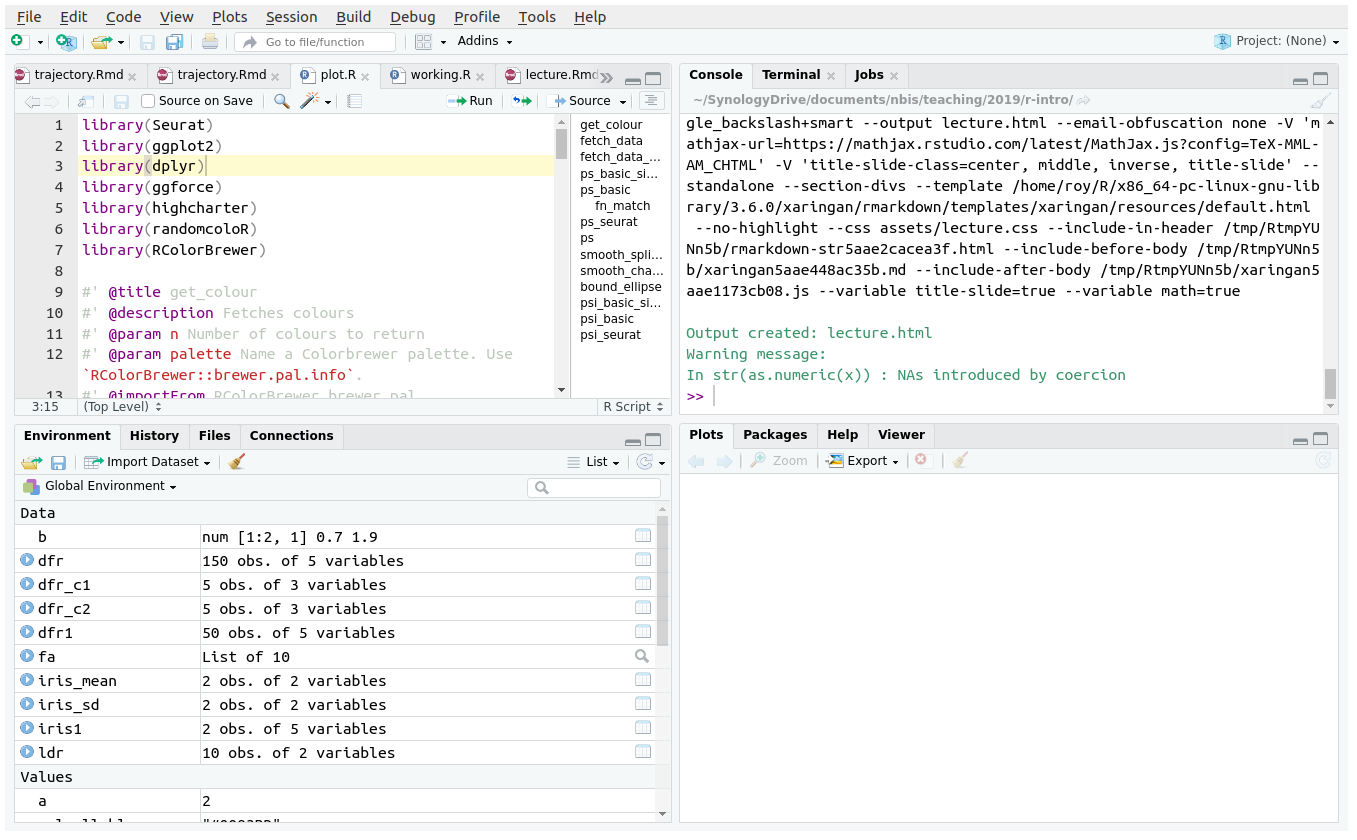

Most of this will work just like you would expectįrom a typical calculator. The console is to do some simple calculator-like computations. Simple calculations in R is a good way to beginĬommands entered in the Console tab are immediatelyĮxecuted by R. Will introduce additional features in due time. R can do much more than a simple calculator, and we Which tabs appear in which panels can be customized Several of the panels are further subdivided into multiple tabs. Notice that RStudio divides its world into four panels. Once you start RStudio, you will see the RStudio interface: Importing and exporting data browsing andĮxporting graphics and browsing files and documentation. Packages monitoring, saving and loading environments GUI that simplifies things like installing and updating RStudio is not a GUI for R, but it does provide a RStudio provides some useful functionality via a graphical
R STUDIO COMMANDS CODE
RStudio provides an integrated support for editing and executing R code and documents. On the level of the course, students can use either of Much finer control over the output format. The reward for learning this more complicated system is The knitr/LATEX system allows users to combine R and LATEX in the same document. Provides a simple markup language and renders the results in HTML. RStudio makes it easy to include text, statistical analysis (R code and R output), and graphical displays all in the same document. RStudio provides support for reproducible research. RStudio can run in a web browser (using Rstudio.cloud) or on your personal computer. This can be distracting for the beginner. The default interfaces for R are quite different on the RStudio runs on Mac, PC, and Linux machines and provides a simplified interface that looks and feels identical on all of them. RStudio is an integrated development environment (IDE) for R that provides an alternative interface to R that has several advantages over other the default R interfaces: 7.3.3 Two-Proportion Inference Code - Method II (matrix):.7.3.2 Two-Proportion Inference Code - Method I (rbind):.7.3.1 When do we use two-proportion inference?.



6.6 bwplot - for one numerical variable or one numerical/one categorical variable.6.5 gf_dotPlot - for one numerical variable.6.4 dotplot - for one numerical variable.6.1 bargraphs - for one or two catagorical variables.5.2 favstats() - for summarizing numeric data.5.1 tally - for summarizing categorical data.4.5.3 Random sample and treatment groups.4.5.2 Randomizing subjects into treatment groups.4.4 Functions - simulating random processes.3.6 Creating Raw Data from Summary Data.3.5 Importing Data from Excel (.xlsx) file.2.4 Example 3: A typical Data Science algorithm - Using Pipes.2.3 Example 3: A typical Data Science algorithm.1.8.2 How many significant digits to show.1.2 Using RStudio on your personal computer.


 0 kommentar(er)
0 kommentar(er)
